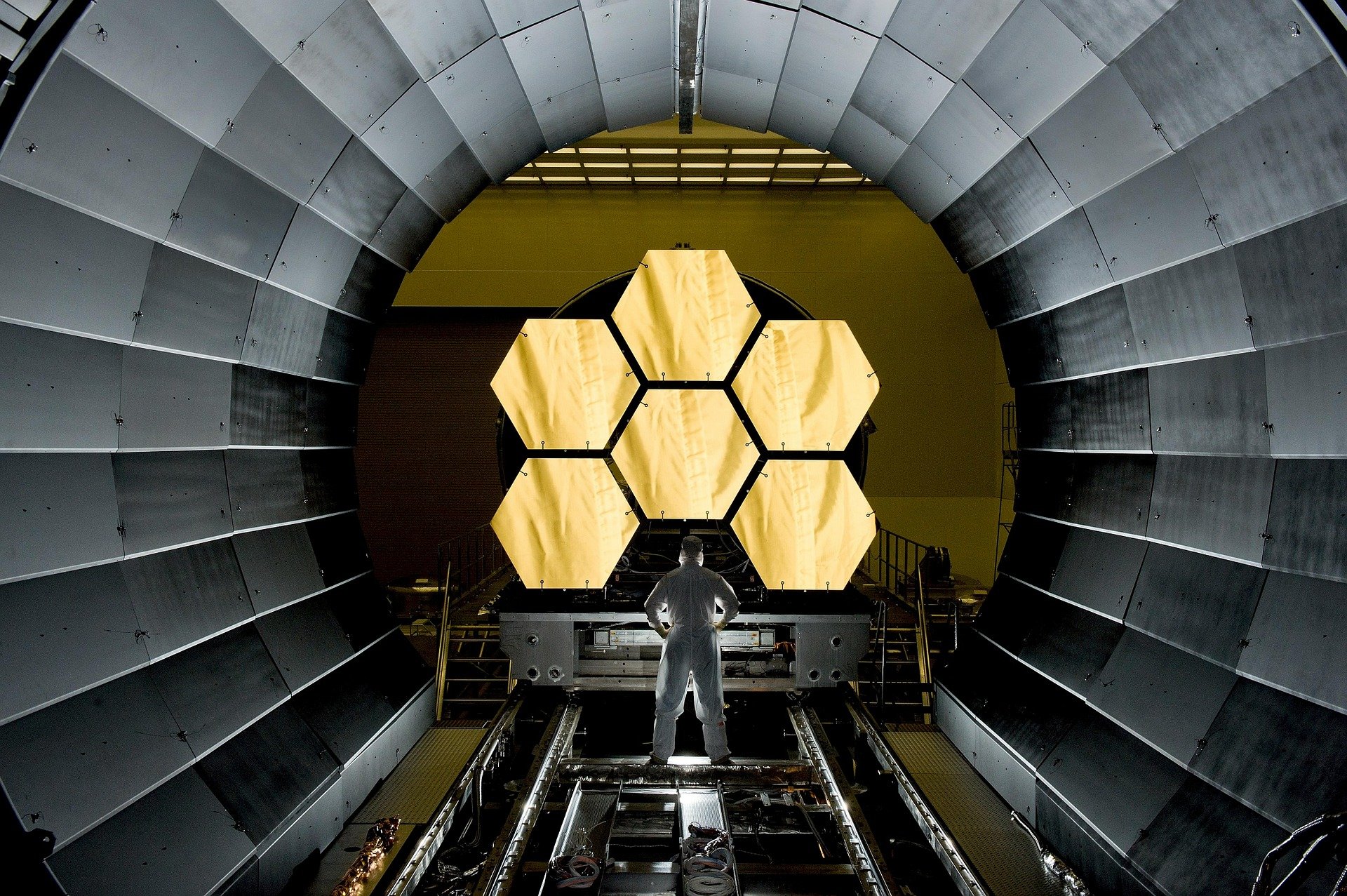Space telescope "James Webb" will go into space no earlier than 2021

Over the course of several years, many media have published positive news regarding the progress of the assembly of the James Webb space telescope . Appeared such materials and on Habré. A few years ago, other news began to appear, not so positive . The problem is that the assembly process of “James Webb” reveals more and more problems , which leads to the fact that the launch date of the telescope all the time is delayed.
It should be noted that work on this project began in the last century - the first structural elements were manufactured in 1996. At the same time, NASA revealed the planned launch date of the system - 2007. But 11 years have passed, and things are still there. In the sense that the telescope remains on Earth, in the near future it does not fly anywhere.
In March of this year, a team of project engineers discovered a number of problems, due to which the start of the telescope had to be postponed for several more years. Then, in March, it was reported that "James Webb" will fly into space no earlier than 2020. At the same time, the budget has increased - now it is already $ 8 billion. A new problem has delayed sending the device into space for another year, that is, now the start is scheduled for 2021. And all this will cost the budget another $ 800 million, and this is a more or less optimistic estimate.
The fact that developers often fix technical problems is not surprising - after all, a telescope is the most complex tool for observing the cosmos of all. It consists of tens of thousands of parts. There are several key parts, one of them is a segment mirror. Because of purely technical reasons, it cannot be made whole, so the engineers decided to create a large mirror of several relatively small elements. In addition, the most important part of the telescope is the solar screen, which protects the entire system from exposure to bright sunlight. Without it, it is impossible, because the Sun constantly gets into the “field of vision” of the system. If the telescope's “eye” is not closed, then observations will fail.

A NASA contractor, Northrop Grumman, is working on the shield. Recently it became known that employees of this company began to clean the valves, part of the screen design, but used the wrong brand of solvent for this. As a result, the valves were damaged. They had to be replaced, which resulted in delays in the implementation of the project. In another case, one of the project managers took the floor to the engineer of the same company, who said that the wiring is correct. No one checked the wiring, and the next time the system was turned on, the equipment suffered from too high a voltage.
But this is not all, since it turned out that the system that is responsible for unfolding the solar screen was installed incorrectly. During the tests, its individual elements were inside the telescope, damaging other parts. Two elements have not yet been found, and moreover, it is unclear where to look for them. The project management stated that all these problems led to a delay in completing the project for another six months. According to representatives of the committee, the problems of "James Webb" complex. A part is a purely human factor, a part is too optimistic terms proposed by a number of experts, another part of the problems is caused by the too high complexity of the telescope.
To remedy the situation, the special committee left a list of 32 recommendations. Now NASA is working on their implementation, 30 points have already been implemented. The last two are the most difficult ones, NASA is currently assessing the possibility of their implementation. Most likely, NASA will need additional funds to finalize the project. In 2019, the agency will manage on its own, but in 2020 it will be necessary to ask the US Congress for a new tranche.
Ahead of the scientists - the final assembly of the telescope (now it is divided into two parts) and testing a single whole. And if everything goes well, then “James Webb” will be allowed to go into space. When and if it starts to work - scientists will receive a lot of new information, much more than has been received so far. The capabilities of Webb exceed the capabilities of Hubble and any other orbiting telescopes that are already in Earth orbit, working for the benefit of humanity.
